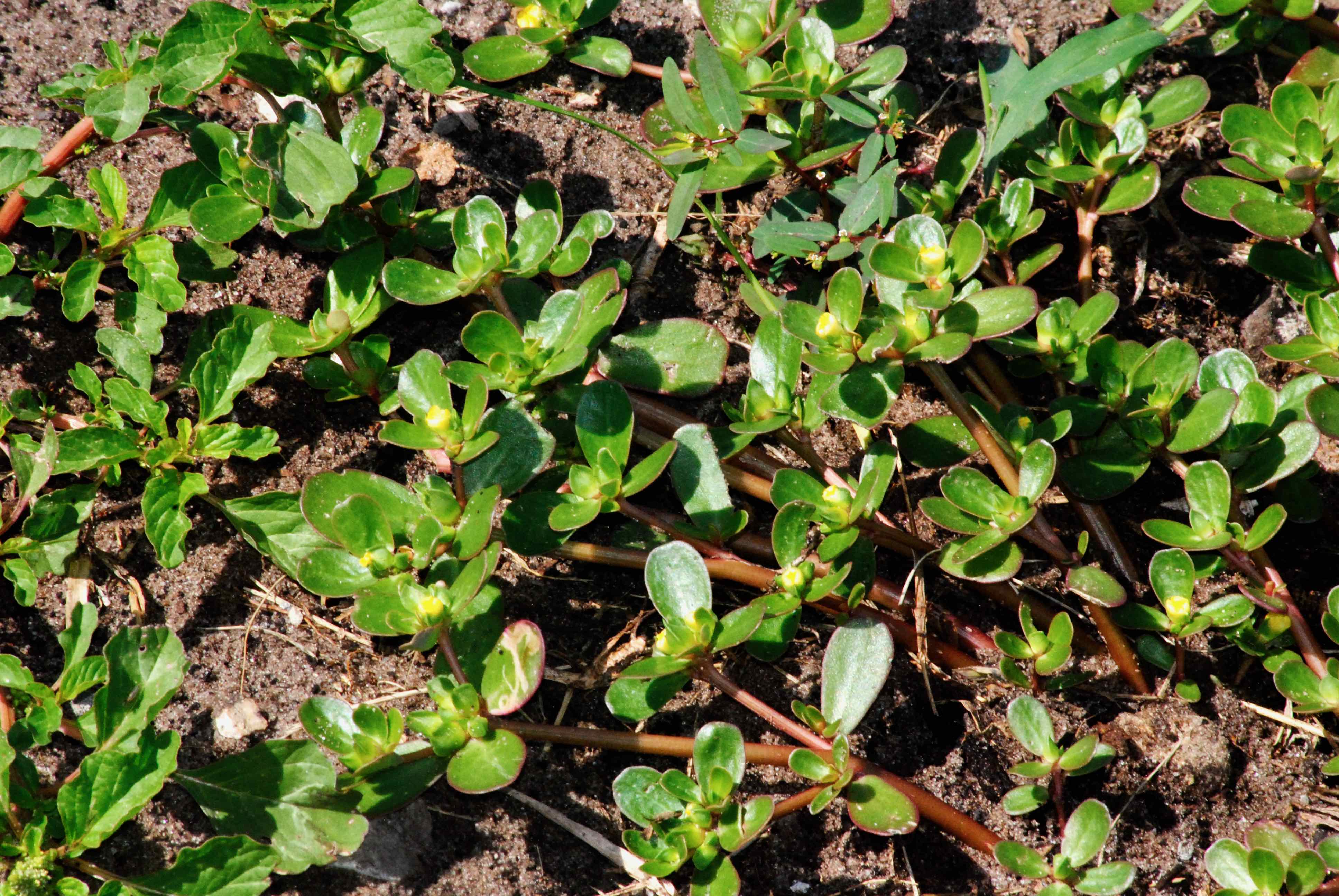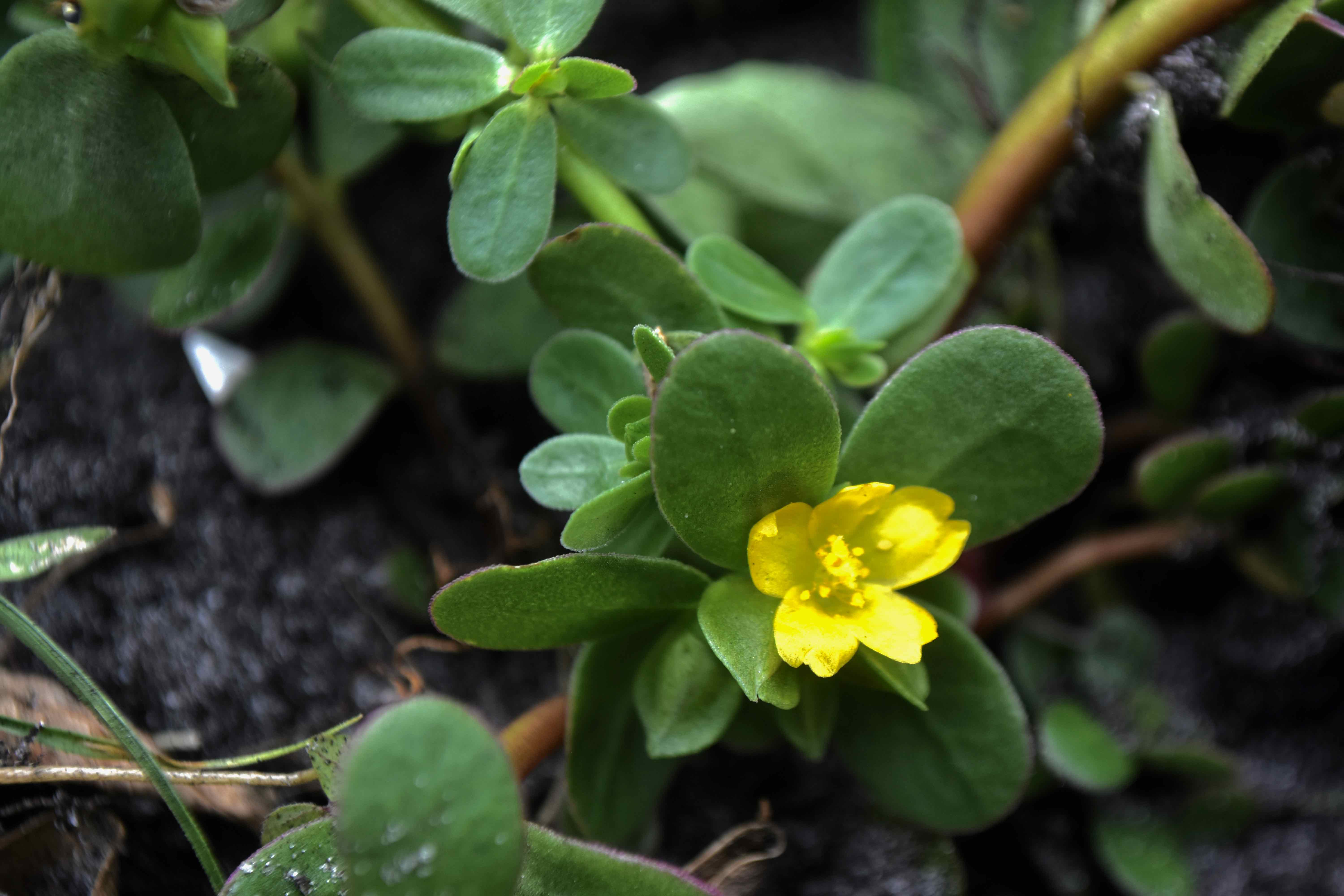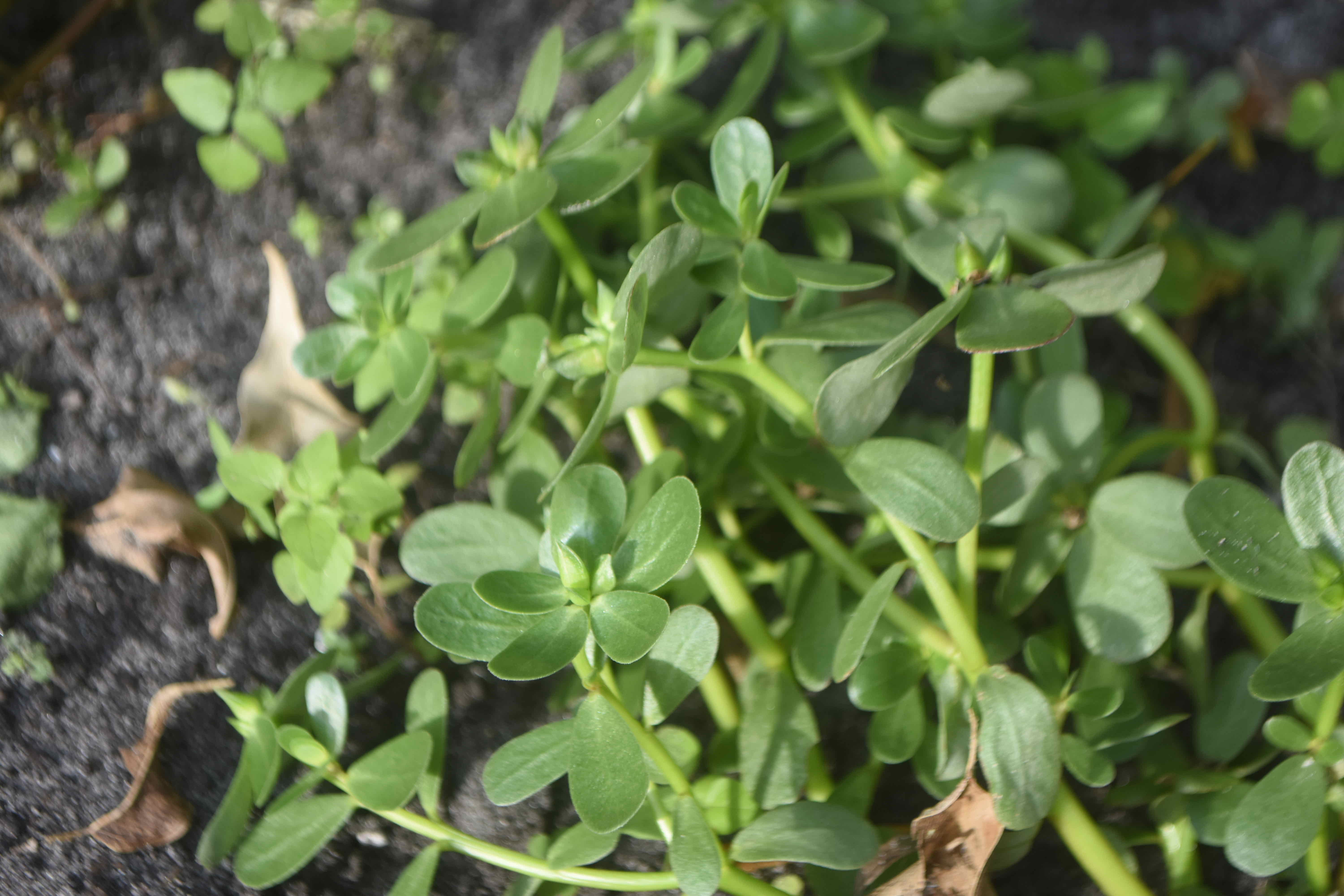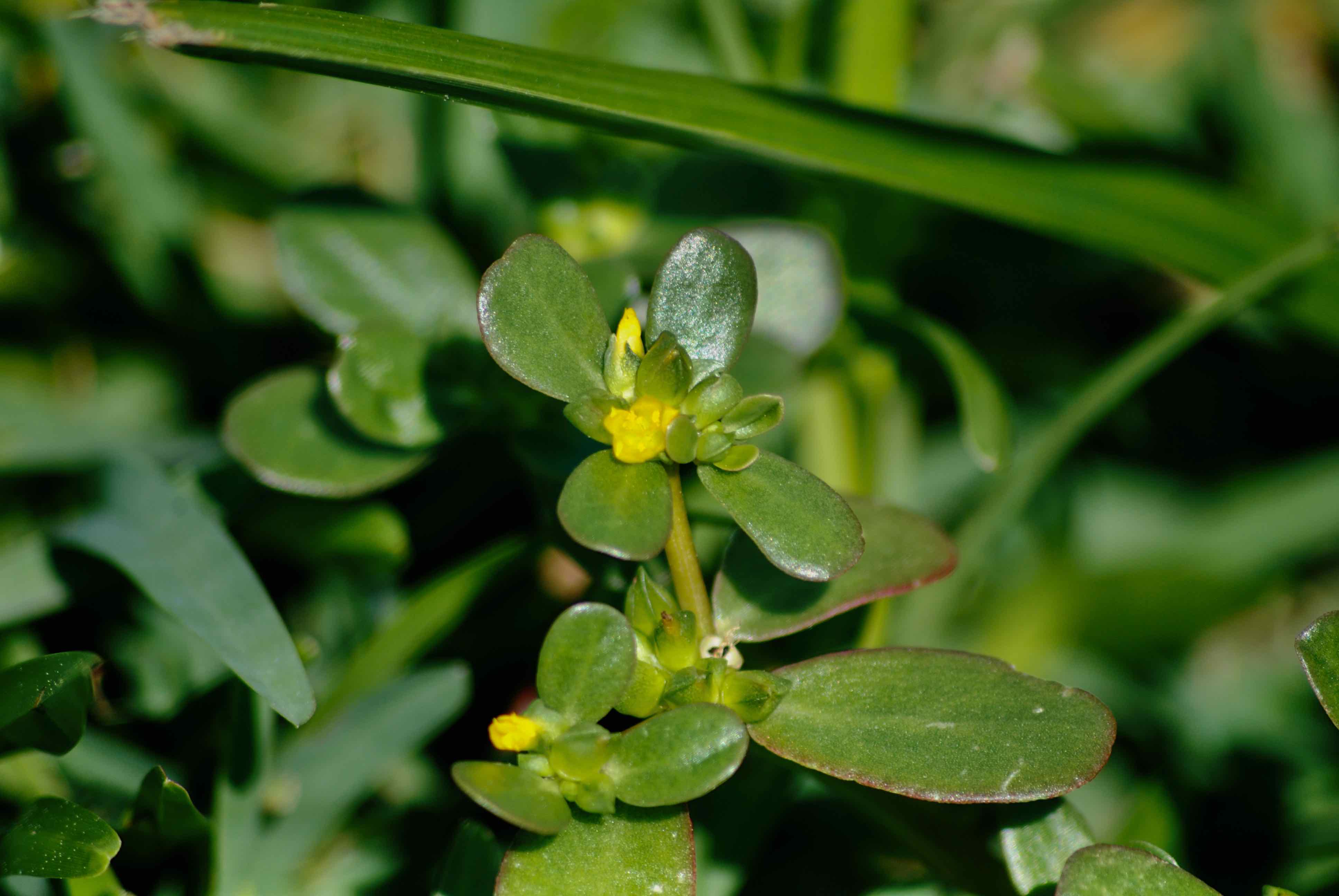
Purslane, also known as little hogweed, photographed at Lake Ida Park, Delray Beach, Delray Beach, in February 2014.
There are those who see purslane, Portulaca oleracea, as a noxious weed, a pest to be pulled or poisoned. And then there are those who prize it, who would tell you if you find it growing in your tomato garden to pull up a few beefstakes to give the purslane more room to grow. It's that kind of plant.
As Sandra Mason of the University of Illinois Extension Service puts it, purslane is "cursed and curried all the time."
First thing about the plant itself: purslane is a succulent, meaning it has thick, fleshy leaves and stems. It has bright, small, yellow flowers that last about a day. The leaves are shiny and somewhat oval-shaped, some more elongated and arranged alternately along the stem. The stems tend to be reddish. Purslane can also produce cleistogamous flowers, which are petal-less and self-pollinating. A plant can produce nearly a quarter million seeds in a season, which can remain viable for 40 years.
Purslane is a member of the Portulacaceae family, which generally are warmer weather plants and hail from the southern hemisphere. Purslane is one of the few members that can tolerate colder climates.
It is found in most of Florida — vouchered specimens have been taken from about 50 of the state's 67 counties, including all South Florida counties. It is found in all of the lower 48 states, plus Hawaii and Puerto Rico. It is found throughout Canada and much of the globe, really. And that's one of the mysteries about purslane: where does it come from?
It is definitely native to parts of Europe, northern Africa and Asia, probably Australia as well. But is it native to North America or is it an exotic? The answer apparently is yes.
First the standard definition of a native: A plant or animal that was living here before the first Europeans stepped foot on the continent. Pre-Columbian, if you will. Anything that made its way here since is "introduced" or exotic. Lake sediments from Ontario Province in Canada provide evidence that purslane was in fact here before Columbus sailed the ocean blue. The U.S. Department of Agriculture PLANTS database says purslane is both native and introduced. Apparently under this theory, European settlers would have transported portulaca seeds with them either accidentally or on purpose, while the plant was already established here. The USDA link is below. In any regard, it's been around North America long enough that Native American tribes were familiar enough with it to use it for food and medicines.
The Institute for Regional Conservation, say purslane is not native to South Florida.
Portulaca comes from the Latin word meaning "to carry." Oleracea is derives from a Latin word referring to kitchen gardens, which could be inspired either by its use as a vegetable or its tendency to pop up in gardens as a weedy pest. Or both.
Purslane is packed with nutrients. It has the highest level of omega-3 fatty acids of any plant. It has more omega-3 than some fish. In fact, it's fed to chickens to reduce egg cholesteral, according to Cornell University. But wait! There's more! Purslane has six times more vitamin E than spinach, seven times the beta carotene of carrots. It's regularly eaten as a green throughout Europe and Asia. It's also used to treat a host of diseases and conditions: anthrax in China; insomnia in Haiti; warts in Japan, Mexico and Peru. The list goes on. However, it contains oxalic acid, a problem for people with kidney stones. Despite its medicinal and gastronomic benefits, purslane can be an agricultural pest. Arizona prohibits it as a noxious weed, and, according to the Flora of North America, purslane is listed among the 10 most noxious weeds in the world. As we said, it's that kind of plant.
Other names: akulikuli-kula, common purslane, duckweed, pursley, pusley, wild portulaca and little hogweed.



